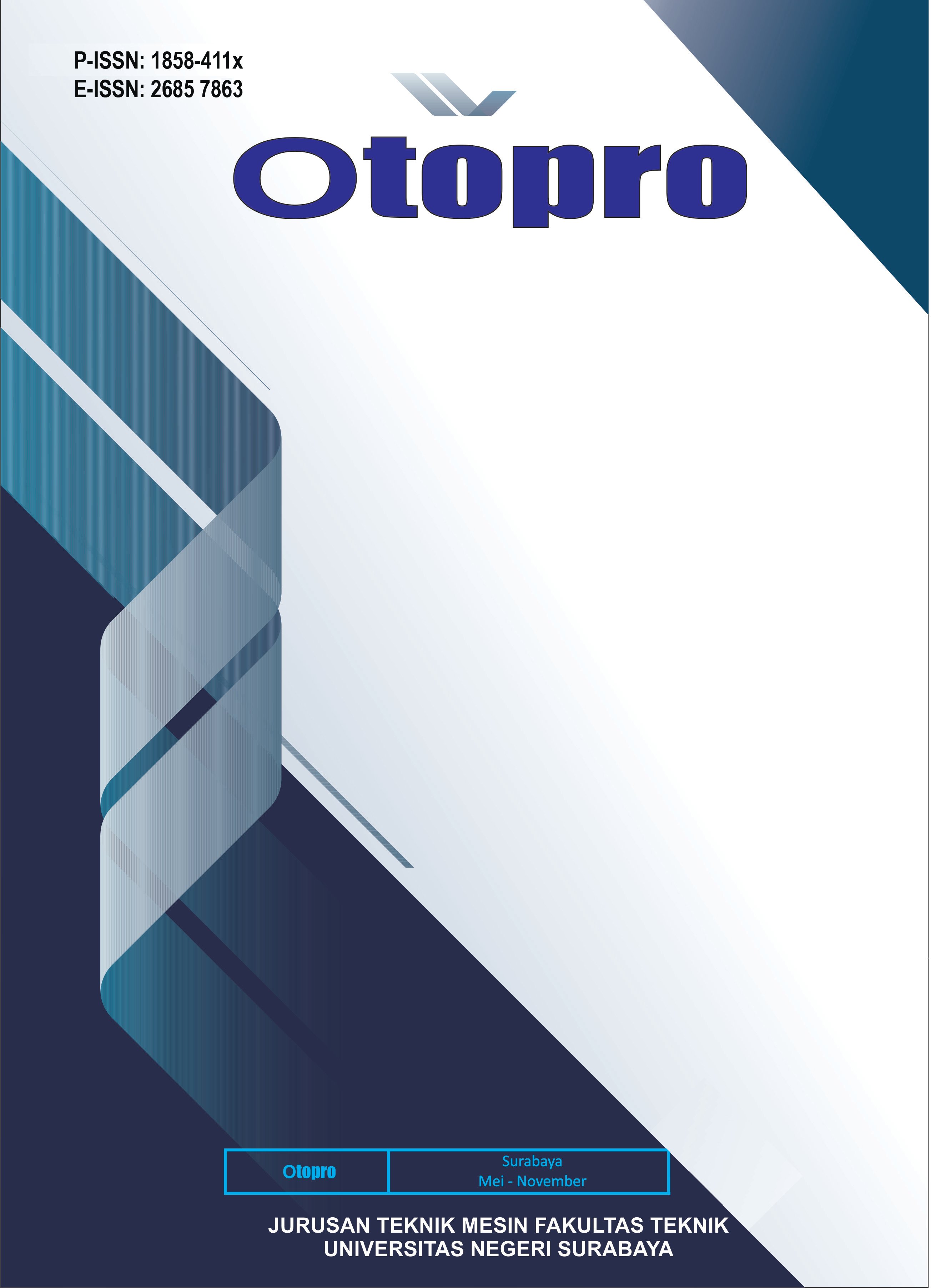ANALISIS KUALITAS BRIKET CAMPURAN KULIT KEMIRI DAN BONGGOL JAGUNG SEBAGAI BAHAN BAKAR ALTERNATIF
DOI:
https://doi.org/10.26740/otopro.v19n2.p45-49Keywords:
Briquettes, Heat, Ignition Time , Gas EmissionAbstract
The increase in human population in the world is proportional to the increase in energy needs. Energy needs are still dominated by fossil energy. Efforts to reduce dependence on fossil energy are by using natural reserves from abundant energy sources, namely biomass. Utilization of candlenut shells and corn cob waste which are abundant in the West Nusa Tenggara (NTB) area can be used as mixed materials for making charcoal briquettes. The target of this research is to analyse the quality of a mixture of charcoal briquettes from a mixture of candlenut shells and corn cobs as an alternative future fuel. In the process of this research, variations of the mixture of candlenut shells and cobs were carried out with variable composition 1 (65% candlenut husk; 25% corn cob; 10% adhesive; variable 2 (55% candlenut husk; 35% corn cob; 10% adhesive); and variable 3 (45% candlenut husk; 45% corn cob; 10% adhesive). In this test, the calorific value, combustion rate, and emission gas test were calculated. The results showed that the mixture was 65% candlenut husk, 25% corn cob, and 10% adhesive. has the highest heating value of 5010 joules, which is according to SNI at least 5000 joules, the combustion rate is 0.91 g/m, and exhaust emissions are CO (1.18), CO2 (2.92), O2 (20.9) and HC (395 ) has met Indonesian national standards according to Minister of Environment Regulation Number 05 of 2006 concerning Emission Standards.
References

Downloads
Published
How to Cite
Issue
Section
License

This work is licensed under a Creative Commons Attribution-NonCommercial 4.0 International License.
 Abstract views: 271
,
Abstract views: 271
, PDF Downloads: 395
PDF Downloads: 395


3.png)










